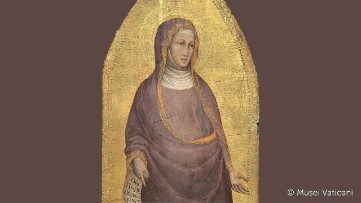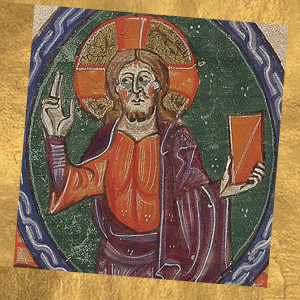St. Paula, Roman Matron

Roman noble
Born in AD 347 to an illustrious Roman family with ties to the gens Cornelia (the ancient high noble - Patrician - family that traced its origins to the legendary king, Agamemnon, and produced more eminent statesmen than any other in Rome’s history), Paula married a Senator, Toxotius, from whom she had five children: four girls and a boy. Until she was 32 years old, she lived in privilege and luxury, dressing in silk and being carried through the city by eunuch slaves. At the death of her husband, Paula approached the group of widows led by Saint Marcella, devoting herself with them to prayer and penance and hosting their semi-monastic order in her great Roman house on the Aventine Hill. It was Marcella, who, AD 382, introduced Paula to St. Jerome, who was in Rome with Epiphanius, bishop of Salamina, and Paulinus of Antioch; Paula was deeply struck by these figures, and she housed the three pilgrims in her home. Jerome had a profound influence on Paula and was catalyst of her desire to embrace the monastic life in the East
In the Holy Land
In September AD 385, after the death of her daughter Blesilla, Paula decided to leave for the Holy Land, accompanied by her daughter, Eustochium, to follow monastic life. Jerome, who had left about a month ahead of them, rejoined them at Antioch, and together they made pilgrimage to the holy places in Palestine; they then went to Egypt, in the footsteps of the hermits and cenobites, and finally settled in Bethlehem. There they founded two monasteries, one for men and one for women. Every day the nuns sang the entire Psalter, which they had to know by heart. Paula was also particularly fond of fasting and performing works of charity. She even gave to the poor from the stores meant to provide for her own community’s subsistence. Both Paula and Eustochium took an active part in Jerome’s preaching, becoming his most fervent collaborators and conforming more and more to his spiritual direction. Jerome was a man of irascible temper, and Paula helped him, especially in his disputes with the followers of Origen, to conduct himself in their regard on the basis of humility and patience. A clear example of their lifestyle is evidenced by the letter Paula wrote to Marcella, who had remained in Rome, to try to persuade her to leave the City and to reach them in Bethlehem.
The translation of the Bible into Latin
Paula’s most significant contributions to Jerome’s preaching are the translation of the Bible from Greek and Hebrew into Latin. She herself suggested the need for such a translation, and with her daughter Eustochium, dedicated herself to copying the work so it could be shared far and wide.
Death
In AD 406, at age 59, Paula understood that death was near. She seemed to hear the voice of Jesus speaking to her in the words of the Song of Songs: “Get up, my friend, my beloved, and come soon! For, behold, the winter is past, the rain has ceased, it is gone; show me your face, let me hear your voice, because your voice is gentle, your face is lovely.” To this she answered in the words of Psalm 27: “The Lord is my light and my salvation, of whom I will be afraid? The Lord is defending my life, who will I fear? I am sure to contemplate the goodness of the Lord in the land of the living,” and let herself go to death. Not only the monks and nuns of the two monasteries she founded, but also many of the poor, whom she had helped over the years, and who considered her a mother as well as a benefactor, took part in her exequies. She was buried in Bethlehem, in the church of the Nativity. Jerome dedicated the Epitaphium sanctae Paulae to her, and at his death in 419, was buried near the tombs of Paola and Eustochium.







